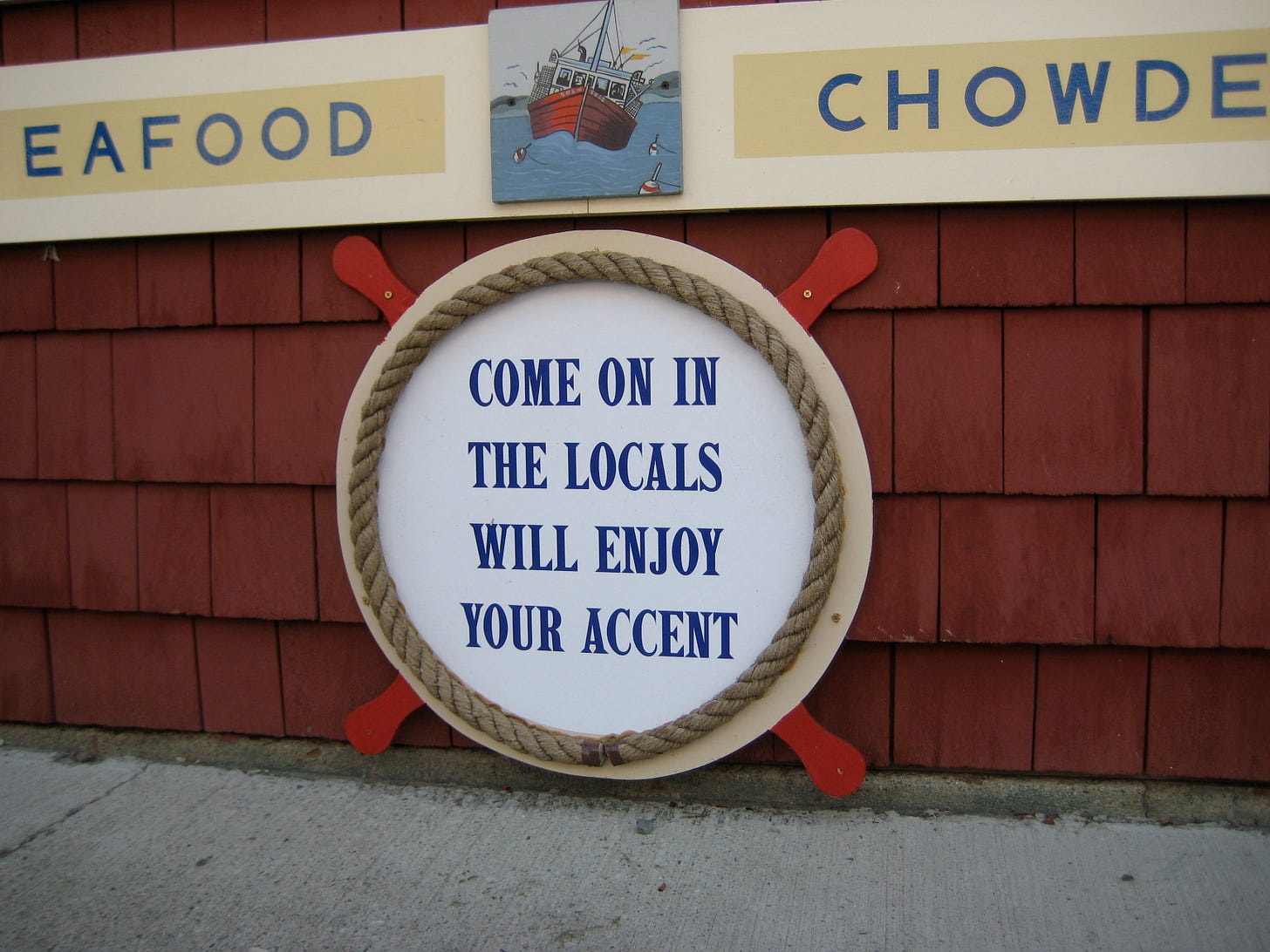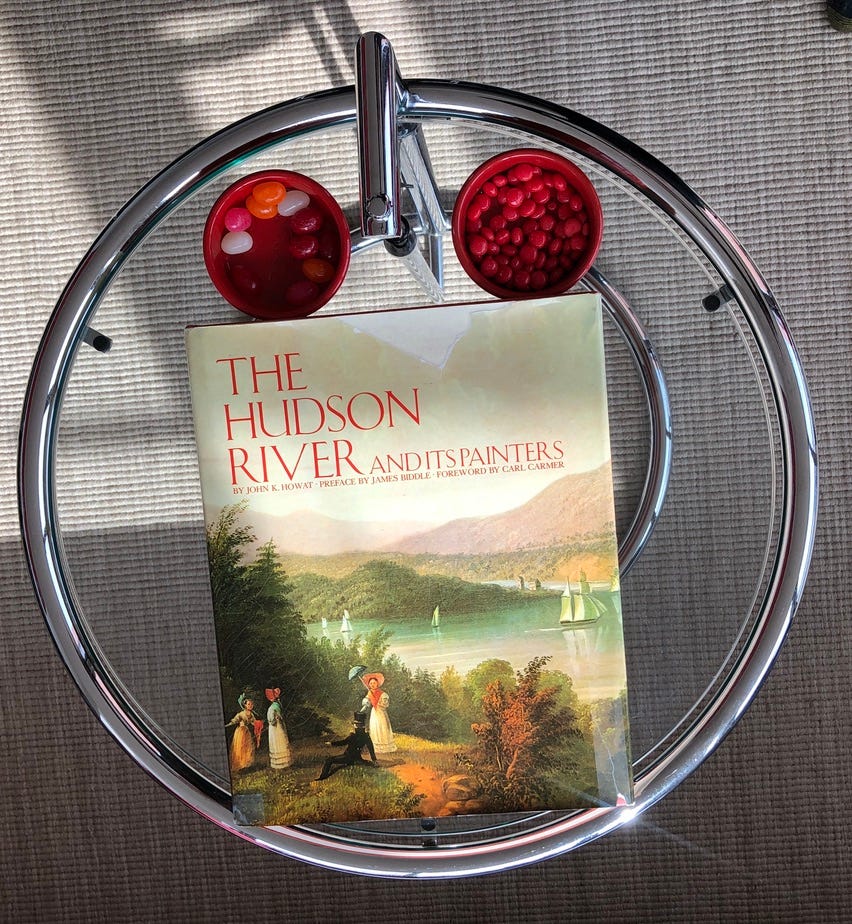Food: Kartoffelpuffers
THE NEXT MORNING, Herb left Ben at a table in the Chacallit House dining room, bent over eggs and sausage and kartoffelpuffers, the potato pancakes that would forever be Ben’s second-fondest memory of Chacallit.
Herb ’n’ Lorna, Chapter 5
Language: Regional Accents
“There are so many things for us to discuss,” she said suddenly, noting with alarm how quickly they were approaching River Road. “I wonder if you could come by this evening to explain it all to me. You might come for dinner — if you like.”
“I’d like to,” said Herb, “but my uncle Ben and I have to get back to Boston, and we were going to leave right after breakfast.”
“Boston?” Lorna asked. “Is that where you’re from?”
“Sure,” said Herb, grinning. “Can’t you tell?”
“Tell?” she asked.
“From the way I talk?”
“I never knew anyone from Boston before,” said Lorna. “I thought you were from Albany.”Herb ’n’ Lorna, Chapter 5
I’ve never been to Albany, and I don’t know anyone from Albany, but I have lived in Boston and know many Bostonians. To my surprise, I learned from Wikipedia that the Boston and Albany accents may not have been much different from each other at the time when Herb and Lorna met. Note the westernmost blue dot on the map accompanying the following excerpt from Wikipedia’s article on New England English.
New England English collectively refers to the various distinct dialects and varieties of American English originating in the New England area. Most of eastern and central New England once spoke the “Yankee dialect,” and many of those accent features still remain in eastern New England, such as “R-dropping” (though this feature is receding among younger speakers today). Accordingly, one linguistic division of New England is into Eastern versus Western New England English, as defined in the 1939 Linguistic Atlas of New England and the 2006 Atlas of North American English (ANAE). The ANAE further argues for a division between Northern versus Southern New England English, especially on the basis of the cot–caught merger and /ɑr/ fronting (appearing twice, for example, in the phrase Park the car). The ANAE also categorizes the strongest differentiated New England accents into four combinations of the above dichotomies, simply defined as follows: Northeastern New England English shows non-rhoticity, the cot–caught merger, and strong /ɑr/ fronting. It centers on Boston, Massachusetts, extending into New Hampshire and coastal Maine. Southeastern New England English shows non-rhoticity, no cot–caught merger, and no strong /ɑr/ fronting. It centers on Providence, Rhode Island, and the Narragansett Bay. Northwestern New England English shows rhoticity, the cot–caught merger, and strong /ɑr/ fronting. It centers on Vermont. Southwestern New England English shows rhoticity, no (or a transitional state of the) cot–caught merger, and no strong /ɑr/ fronting. It centers around the Hartford-Springfield area of Connecticut and western Massachusetts.

Wikipedia “New England English”
See also: Dialect, Slang, Idiolect, Shibboleths TG 11; Language TG 11
Recently on the coffee table (but now packed for moving):
[more to come on Friday, June 3, 2022]
Have you missed an episode or two or several?
You can begin reading at the beginning or you can catch up by visiting the archive or consulting the index to the Topical Guide.
You can listen to the episodes on the Personal History podcast. Begin at the beginning or scroll through the episodes to find what you’ve missed.
You can ensure that you never miss a future issue by getting a free subscription. (You can help support the work by choosing a paid subscription instead.)
At Apple Books you can download free eBooks of “My Mother Takes a Tumble,” “Do Clams Bite?,” “Life on the Bolotomy,” “The Static of the Spheres,” “The Fox and the Clam,” “The Girl with the White Fur Muff,” “Take the Long Way Home,” “Call Me Larry,” and “The Young Tars,” the nine novellas in Little Follies, and Little Follies itself, which will give you all the novellas in one handy package.
You’ll find an overview of the entire work in An Introduction to The Personal History, Adventures, Experiences & Observations of Peter Leroy. It’s a pdf document.






